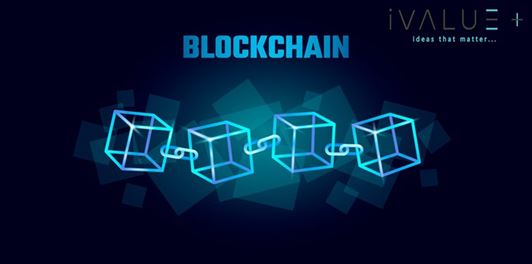
Internet Of Things (IoT)
May 3, 2021
Corona Effects- The Bottom Line
May 19, 2021Transforming Industries with Blockchain Technology
What is Blockchain?
Blockchain technology is most simply defined as a decentralized, distributed ledger that records the provenance of a digital asset. By inherent design, the data on a blockchain is unable to be modified, which makes it a legitimate disruptor for industries like payments, cybersecurity and healthcare. Our guide will walk you through what it is, how it’s used and its history.
A blockchain is, in the simplest of terms, a time-stamped series of immutable records of data that is managed by a cluster of computers not owned by any single entity. Each of these blocks of data (i.e. block) is secured and bound to each other using cryptographic principles (i.e. chain).
So, what is so special about it and why are we saying that it has industry-disrupting capabilities?
The blockchain network has no central authority — it is the very definition of a democratized system. Since it is a shared and immutable ledger, the information in it is open for anyone and everyone to see. Hence, anything that is built on the blockchain is by its very nature transparent and everyone involved is accountable for their actions.
Business runs on information. The faster it’s received and the more accurate it is, the better. Blockchain is ideal for delivering that information because it provides immediate, shared and completely transparent information stored on an immutable ledger that can be accessed only by permissioned network members. A blockchain network can track orders, payments, accounts, production and much more. And because members share a single view of the truth, you can see all details of a transaction end to end, giving you greater confidence, as well as new efficiencies and opportunities.
Blockchain technology has made a great impact on society, including:
- Bitcoin, Blockchain’s prime application and the whole reason the technology was developed in the first place, has helped many people through financial services such as digital wallets. It has provided microloans and allowed micropayments to people in less than ideal economic circumstances, thereby introducing new life in the world economy.
- The next major impact is in the concept of TRUST, especially within the sphere of international transactions. Previously, lawyers were hired to bridge the trust gap between two different parties, but it consumed extra time and money. But the introduction of Cryptocurrency has radically changed the trust equation. Many organizations are located in areas where resources are scarce, and corruption is widespread. In such cases, Blockchain renders a significant advantage to these affected people and organizations, allowing them to escape the tricks of unreliable third-party intermediaries.
- In the area of politics, Blockchain is being looked at by an organization called Follow My Vote, which is trying to combat election fraud at the ballot box.
- The advent of the Internet of Things (IoT) has unleashed a plethora of smart machines that transfer data over the Internet without any human interaction needed. Likewise, technology is even used for public services such as rubbish collection, transportation, and traffic management. So, in the world of IoT, you can make Smart Contracts and allow smart objects to perform the listed tasks, which in turn negates the need for human involvement.
- Blockchain technology can create a decentralized peer-to-peer network for organizations or apps like Airbnb and Uber. It allows people to pay for things like toll fees, parking, etc.
- Blockchain technology can be used as a secure platform for the healthcare industry for the purposes of storing sensitive patient data. Health-related organizations can create a centralized database with the technology and share the information with only the appropriately authorized people.
- In the private consumer world, Blockchain technology can be employed by two parties who wish to conduct a private transaction. However, these kinds of transactions have details that need to be hammered out before both parties can proceed:
- What is the T&C of the exchange?
- Are all the terms clear?
- When does the exchange start?
- When will it finish?
- When is it unfair to halt the exchange?
Fortunately, since Blockchain technology employs a shared ledger, distributed ledger, or any other decentralized network, the parties can quickly gain answers to these exchange relation queries.
Also, transactions or information on a Blockchain platform can be tracked from departure to the destination point by all of the users in the supply chain. All of the above examples are proof that this technology is here to stay and will be a vital source in the future.
How Does a Blockchain Work?
Picture a spreadsheet that is duplicated thousands of times across a network of computers. Then imagine that this network is designed to regularly update this spreadsheet and you have a basic understanding of the blockchain.
Information held on a blockchain exists as a shared — and continually reconciled — database. This is a way of using the network that has obvious benefits. The blockchain database isn’t stored in any single location, meaning the records it keeps are truly public and easily verifiable. No centralized version of this information exists for a hacker to corrupt. Hosted by millions of computers simultaneously, its data is accessible to anyone on the internet.
References:
https://www.investopedia.com/terms/b/blockchain.asp
https://builtin.com/blockchain
https://www.ibm.com/topics/what-is-blockchain
https://www.simplilearn.com/tutorials/blockchain-tutorial/blockchain-technology








